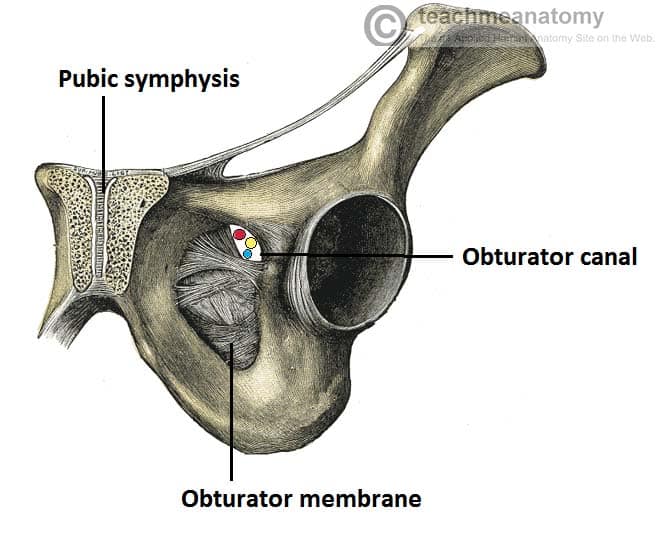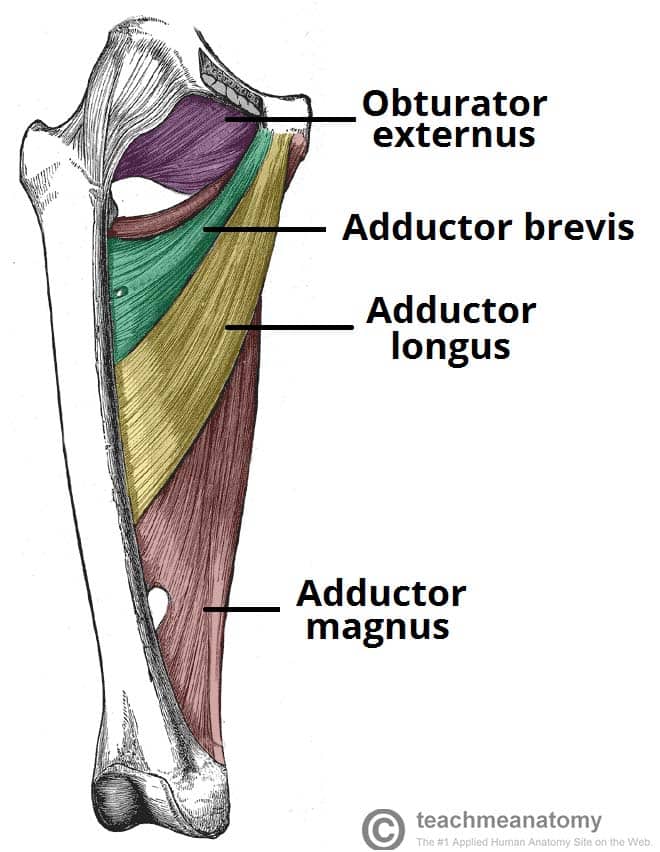The obturator artery is a branch of the internal iliac artery which arises in the pelvis.
It supplies structures in the pelvis and medial thigh regions.
Course
The obturator artery arises from the anterior division of the internal iliac artery within the pelvis.
It then descends anteroinferiorly onto the lateral pelvic wall to reach the obturator foramen. It gives rise to several branches within the pelvis:
- Iliac branches
- Vesical artery
- Pubic branch
At the obturator foramen, the obturator artery leaves the pelvic cavity via the obturator canal and enters the medial thigh. Here it terminates by bifurcating into two branches:
- Anterior branch – anastomoses with the posterior branch of the obturator and medial circumflex femoral arteries.
- Posterior branch – anastomoses with the anterior branch of the obturator and the inferior gluteal artery.

Fig 1 – The obturator canal, formed by the obturator membrane within the obturator foramen of the pelvis.
Supply
The obturator artery supplies structures in the pelvis, medial thigh and gluteal regions.
- Pelvis branches: supply the iliacus muscle, urinary bladder, iliac and pubic bones.
- Extrapelvic branches – supply the muscles and skin of the medial thigh (pectineus, obturator externus, adductor muscles and gracilis) and the femoral head.

Fig 2 – Muscles of the medial thigh. The overlying muscles in the anterior compartment have been removed.